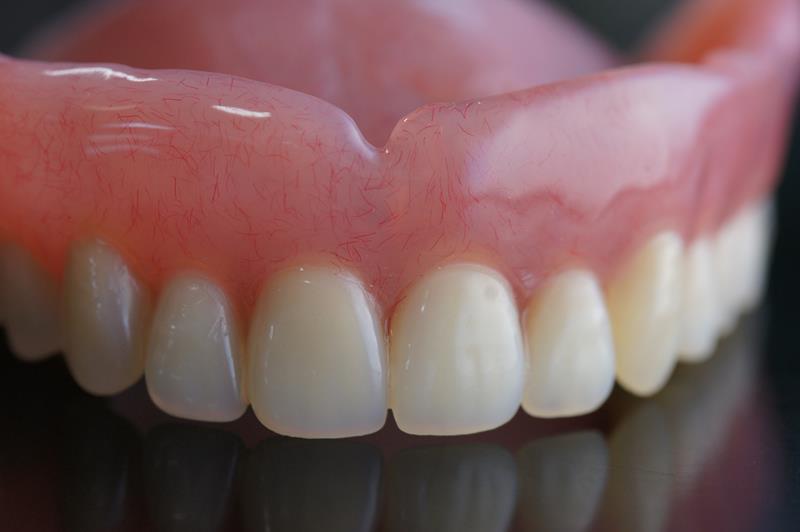
Dental Implants vs. Dentures: Choosing the Right Solution for Your Smile
When it comes to replacing missing teeth, both dental implants and dentures are viable options. However, they differ significantly in their approach, benefits, and long-term outcomes. Understanding these differences is crucial in making an informed decision about your oral health.
Dental Implants: A Permanent Foundation
Dental implants are titanium posts surgically placed into the jawbone, acting as artificial tooth roots. They provide a strong and stable foundation for replacement teeth that look, feel, and function like natural teeth.
- Procedure: Involves surgical placement of the implant, followed by a healing period (osseointegration) where the bone fuses with the implant. A custom-made crown, bridge, or denture is then attached to the implant.
- Stability and Function: Implants are fixed in the jawbone, offering excellent stability and allowing you to eat, speak, and smile with confidence. They restore almost full chewing power.
- Long-Term Health: Implants stimulate the jawbone, preventing bone loss that commonly occurs with tooth loss and denture use. They do not require altering adjacent teeth for support.
- Maintenance: Implants are cared for like natural teeth, with regular brushing, flossing, and dental checkups.
- Cost: Generally more expensive upfront than dentures, but their longevity and long-term benefits can make them a cost-effective solution in the long run.
Dentures: A Removable Option
Dentures are removable appliances that replace missing teeth. They can be full (replacing all teeth) or partial (replacing some teeth).
- Procedure: Dentures are custom-made to fit over the gums. They are non-surgical and less invasive than implants.
- Stability and Function: Dentures feel less stable than natural teeth or implants, potentially affecting speech and chewing. Adhesives are a common need for better retention ( ie. staying in).
- Long-Term Health: Dentures can contribute to bone loss in the jaw, leading to changes in facial structure over time. They may require adjustments or replacements as the jawbone changes.
- Maintenance: Dentures require daily removal for cleaning and soaking.
- Cost: Typically less expensive upfront than implants.
Snap-In Dental Implants: The Ultimate Beginner’s Guide
Snap-in dental implants, also known as implant-supported dentures or overdentures, offer a stable and comfortable alternative to traditional removable dentures. They combine the benefits of dental implants with the convenience of dentures, providing improved function, comfort, and confidence.
What are Snap-In Dental Implants?
Snap-in dentures are a type of overdenture that attaches to dental implants that are surgically placed in your jawbone. Typically, two or more implants are used to secure a full or partial denture. The denture has special attachments that “snap” onto the implants, providing a secure and stable fit.
Benefits of Snap-In Dental Implants:
- Improved Stability: Unlike traditional dentures that can slip or move, snap-in dentures are firmly anchored to the implants, providing excellent stability for eating, speaking, and smiling.
- Enhanced Comfort: Snap-in dentures eliminate the need for messy adhesives and reduce gum irritation, resulting in a more comfortable wearing experience.
- Increased Chewing Efficiency: The stability provided by implants allows for more efficient chewing compared to traditional dentures, enabling you to enjoy a wider variety of foods.
- Bone Preservation: Dental implants stimulate the jawbone, helping to prevent bone loss that can occur with traditional denture 1 use. This helps maintain facial structure and improve denture fit over time.
- Natural Feel and Appearance: Snap-in dentures feel more like natural teeth than traditional dentures and can be designed to look very natural.
- Easy Maintenance: While snap-in dentures are removable for cleaning, they are generally easier to maintain than traditional dentures due to their stability and reduced reliance on adhesives.
- Increased Confidence: The improved stability, comfort, and natural feel of snap-in dentures can significantly boost your confidence and quality of life.
The Snap-In Dental Implant Procedure:
- Consultation and Planning: A thorough examination, including X-rays and possibly 3D scans, is conducted to assess your jawbone and determine the optimal placement of the implants. A customized treatment plan is created.
- Implant Placement: Titanium implants are surgically placed into your jawbone. The number of implants needed varies depending on individual needs and the type of denture being used.
- Osseointegration (Healing): The implants are allowed to fuse with your jawbone, a process that typically takes several months.
- Abutment Placement: Once osseointegration is complete, abutments (connector posts) are attached to the implants.
- Denture Fabrication: A custom-made denture is created with attachments that correspond to the abutments on the implants.
- Denture Placement: The denture is “snapped” onto the abutments, providing a secure and stable fit. You will be instructed on how to insert and remove the denture for cleaning.
Caring for Snap-In Dental Implants:
- Remove and clean your snap-in denture daily, just like traditional dentures.
- Brush your gums and any remaining natural teeth twice daily.
- Visit your dentist regularly for checkups and professional cleanings.
Are Snap-In Dental Implants Right for You?
Snap-in dental implants are an excellent option for many people who are missing all or some of their teeth. They offer a significant improvement over traditional dentures in terms of stability, comfort, and function. However, the best way to determine if snap-in implants are right for you is to consult with a dentist. They can assess your individual needs and recommend the most appropriate treatment option.
